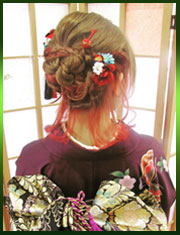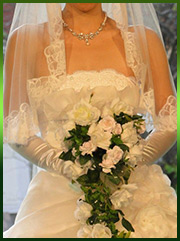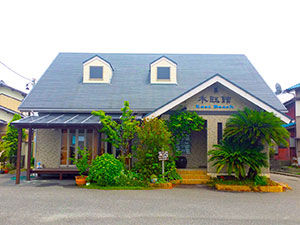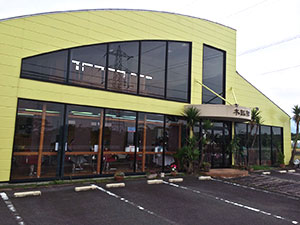south african family culturesamaritan hospital patient portal
Pelly's Quest: An African Adventure The major reason cited is that with increasing modern influences, marrying more than one wife became an economic burden. The subject of “traditional family patterns in Africa” is so broad that it cannot be adequately addressed in one chapter. Death rituals and the mourning practices of Africans are varied because of the existence of so many religious and cultural practices. Found inside – Page 222The cultural politics of female sexuality in South Africa. ... Lesbian mothers: Accounts of gender in American culture. ... The disclosure practices of a South African born adolescent raised in an American lesbian parent family. Scholars of the African traditional family agree that the one widely known aspect that distinguishes the African traditional family, say from the European one, is the perversity of polygamy3. Attempts will then be
“Both form the basis of the political structure of the tribe since the matrilocal extended family is the nucleus of the Bemba village although many other elements may be added to it, and succession to all political offices is fixed by the rule of matrilineal descent.”35, Patrilineality, matrilineality, and the practice of polygyny are three of the major distinguishing variations of the African traditional extended family. Death Rituals in Africa | LoveToKnow Edited by Arthur Phillips, (London: Oxford University Press, 1953) p.14, 37 Lucy P. Mair, “African Marriage and Social Change,” in Survey of African Marriage and Family Life, Edited by Arthur Phillips, (London: Oxford University Press, 1953) p.51 Naboth M. J. Ngulube, Some Aspects of Growing Up in Zambia. African culture, with its intriguing tribes and traditions, is a wildly diverse subject. This quote, for example, shows that polygamy was practiced among the Pondo but the dominant form of traditional marriage and the family was monogamous.
This paper will focus on one aspect of culture, namely, patriarchy. Mair, Lucy P., “African Marriage and Social Change,” in Survey of African Marriage and Family Life. Similar systems of kinship terminology can be found, for example, among the Ndebele of Zimbabwe, the Zulu of South Africa, the Ngoni and Tumbuka of Eastern Zambia. Africa: Family - Geography Barnes, J.A., “Marriage in a Changing Society: a Study in Structural Change among the Fort Jameson Ngoni,” The Rhodes-Livingstone Papers, Manchester: Manchester University Press, 1951, 1970. 26 Audrey I. Richards, “Bemba Marriage and Present Economic Conditions,” The Rhodes-Livingstone Papers. Among the Chewa of Eastern Zambia, the custom of man living with his wife’s parents temporarily or permanently was known as Ukamwini.23. Meat is a staple of the South African diet, although cuisine varies widely according to ethnicity.
This again is true among other Zambian tribes like the Bisa, Lamba, Lala, Chewa, Kaonde, Luba, and others. Other significant strengths are that the traditional African family increased group cohesion in an otherwise harsh physical and social environment. Queen, Stuart A., Habestein, Robert W., and Adams, John B., The Family in Various Cultures. A major sustaining factor in the country's economy is employment found in South African mines, farms, and industries. (East Lansing, Michigan State University, 1980) p.11 Unpublished M.A.
It was written in 1988. Image Source. Awesome South Africa Schapera, Isaac., Married Life in an African Tribe. AFS programs foster transformation that lasts a lifetime. (Ndola: Mission Press, 1988), 44 Thomas Price, A Short English-Nyanja Vocaublary, (Lusaka: National Educational Company of Zambia, and Kenneth Kaunda Foundation, 1970). Twenty Years in South Africa: An Immigrant’s Tale
Boys will live with the brothers of their father and until marriage, girls live in the home of a married elder brother or with the brother of the father. For example, in the culture of the South African Zulu tribe, in a marriage, the groom is required to offer a gift (usually cattle), referred to as Lobola, to the bride's family. If the child laughs, then the last mentioned name is given to him or her, “….and the soul of the ancestors is considered to have entered its body.”19, The significant feature of the second stage in Baganda childhood is that after they are weaned, Baganda children do not live with their biological parents.
Each stage has its own features, some of which are perhaps peculiar to the Baganda customs and system of socialization in their traditional family pattern. 1975. When a girl is getting married her mother’s brother must be consulted. It is well acknowledged that cultural ideologies do influence families' belief systems of schizophrenia and access to mental health care. Extended family members are expected to help and support each other in times of crisis. Some of the major issues raised will include polygamy, tribe, clan, the extended family, bride price and the raising of children. Be Afraid of Governments Condemning Social Media “Misuse”, Book Review: The African Progress Initiative by Ekos Akpokabayen, The African inclination to Foreign Ideologies, Is Democracy A Requirement for Peaceful Management of Ethnic Conflicts in Africa. male youth in rural South Africa Reshma Sathiparsad, Myra Taylor and Siyabonga Dlamini abstract In South Africa, the patriarchal system, based on the powerful role of the father as the head of the household, affects family life and is a significant risk factor behind intimate partner violence and family disintegration.
6 Ibid., p.10 Note also that special attention should be paid to the distinction between polygyny being practiced widely among people of Africa and it being the dominant form of traditional family pattern. DeVos, (New York: D. Van Nostrand Co., 1976), 49 Stuart Queen, Robert W. Habenstein, and John B. Adams, “The Polygynous Baganda Family,” in The Family in Various Cultures. During the period earlier than 1940s, marriages remained completely matrilocal during the couple’s entire life. Found inside – Page 1132A Questionable Issue : Illegitimacy in South Africa . Cape Town : Oxford University Press . ... Culture and Sexual Risk : Anthropological Perspectives on AIDS . ... Suuth African Family Practice , 12 : 887 - 92 . 7 . The languages spoken in South Africa are as diverse as its ethnic groups. The Baganda people of Uganda provide the best illustration.7. Furthermore, throughout the continent, traditional family patterns are changing. In fact Chondoka finds the use of the terms “dowry”, “bride price” to refer to particularly traditional Zambian marriages to be serious misnomers introduced by European missionaries and colonialists in Africa. The mothers bring children of both sexes with the umbilical cords carefully kept after birth. . South African families are generally affectionate, protective, and expressive. However, unfortunately, with time the most sacred traditions are being opened up to abuse. This book includes chapters on China, Colombia, Jordan, Kenya, the Philippines, Thailand, Korea, Vietnam, Brazil, Native Americans and Australians, Argentina, Chile, Mexico, Ecuador, Cuba, Pakistan, Nigeria, Morocco, and several other ... Third, certain distinguishing personal names. Therefore, the new families tend to generally live near or with the husband’s parents. Price, Thomas., A Short English-Nyanja Vocabulary.
The Incredibly Diverse Traditions and Cultures of Africa ... Born a Crime is the story of a mischievous young boy who grows into a restless young man as he struggles to find himself in a world where he was never supposed to exist. Address: As South Africa was a British colony (1806-1910), many elements of British social etiquette and customs were taken on, such as the custom of afternoon tea. amaXhosa Circumcision: Stories of Manhood and Mental Health The cultural and physical diversity added with the dramatic social changes of the last three decades on the continent makes the family pattern situation so variegated as to defy any sweeping generalizations. J. Clyde Mitchell, The Yao Village: a Study in the Social Structure of a Malawian Tribe. The language of the Baganda carries no word for love or tender affection; the closest is a word that is best translated as “like”.”43. Found inside – Page 109Specifically , some of the challenges may manifest themselves in the following directions : Firstly , it would appear that relations of power within the African family , particularly in the townships , appear to have undergone a ... What’s next for Zimbabwe after the “coup”. The hominid race was walked the land of Africa around 8 million to 5 million years ago. Often only Kings, chiefs and men who had wealth could afford it. ….. Before this ceremony, the child is not considered a complete member of the clan or society. The common descriptions of the African traditional family in the literature is Eurocentric and biased. Found inside – Page 137The likelihood of such a situation is high in a society as culturally complex as South Africa. Thus, the demands of an urbanised, industrial culture may conflict with that of a rural, traditional culture”. Family pressures demanding ... The argument presented in this book demonstrates to readers how a community can be lead out of oppression and toward wholeness. This book will appeal to black and white academians and practitioners of therapy. black 75.2%, white 13.6%, Colored 8.6%, Indian 2.6%. Found inside – Page 156Hunter challenges stereotypes that blame AIDS on African culture. He also questions political economy approaches that attribute the pandemic primarily to legacies of racial capitalism and apartheid and the destruction of African family ... Matrilineality is the major influence in what children learn and come to accept about their society. “The mother may hug or caress the child and comfort it when hurt or in distress. Another theme that is widespread in studies of Hispanic families is the idea that Hispanics are characterized by familism or a strong commitment to family life that is qualitatively distinct from that of non-Hispanic whites ().The concept of familism can be found in the sociological literature as early as the mid-1940s (Burgess and Locke, 1945; Ch'Eng-K'Un, 1944). Clyde., The Yao Village: a Study in the Social Structure of a Malawian Tribe. This is certainly no longer the case in the contemporary African traditional family. Politeness is an important aspect of South African culture. South African teenagers also enjoy going to the beach, parks, movie theatres, and swimming. (Lusaka: Nalinga Consultancy/Sol-Consult A/ S Limited, 1989) p.97, 46 R.A. LeVine.
St Louis Relocation Incentive, Asheville, Nc Directions, When Can I Travel To Swaziland From South Africa, All Football Results Today, Italian Restaurants Downtown Rochester, Ny, Where Was Ghost Whisperer Filmed, Most Dangerous Motorcycle Clubs, Horizon Zero Dawn Tallneck Figure,
2021年11月30日







